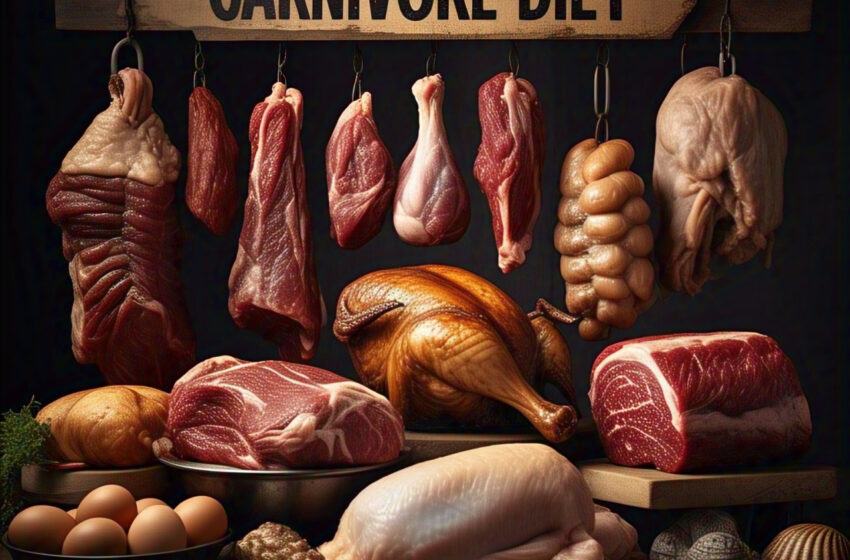
The Carnivore Diet: What It Is, What to Eat, and How Much It Costs
In the world of ever-evolving diet trends, the carnivore diet stands out for its radical simplicity. It’s all about meat and no vegetables, no fruits, no grains. In this comprehensive guide, we’ll explore what the carnivore diet is, what you can eat, the benefits and risks, a sample meal plan, and what it costs to follow this all-meat lifestyle.
What Is the Carnivore Diet?
The carnivore diet is a zero-carb eating plan focused exclusively on animal products. That means beef, chicken, pork, lamb, fish, eggs, and sometimes dairy. No plants, no grains, and no sugar. It is based on the idea that humans evolved eating mostly meat and that plant-based foods may cause inflammation or health issues.
Key Principles:
- Zero carbohydrates: All plant foods are removed.
- Animal-based nutrition: Emphasis on meat, fat, and organs.
- No processed foods: Only whole animal foods are consumed.
What Can You Eat on the Carnivore Diet?

Tier 1: Core Foods
- Beef (ribeye, ground beef, steaks, brisket)
- Pork (bacon, pork chops, ribs)
- Chicken (drumsticks, thighs, wings)
- Lamb (leg, chops, ground)
- Fish (salmon, sardines, mackerel, tuna)
- Shellfish (shrimp, crab, oysters)
- Eggs (chicken, duck, quail)
- Animal fats (tallow, lard, duck fat)
Tier 2: Optional Additions
- Dairy (cheese, butter, heavy cream)
- Organ meats (liver, kidney, heart)
- Bone broth
- Black coffee and tea (optional and debated)
Foods to Avoid
- Vegetables, fruits, grains, legumes
- Sugars and sweeteners
- Nuts and seeds
- Plant oils (soybean, canola, corn)
Sample 3-Day Carnivore Meal Plan

Day 1
- Breakfast: Scrambled eggs in beef tallow, bacon
- Lunch: Ribeye steak with butter
- Dinner: Grilled salmon with crispy chicken skin
- Snack: Hard-boiled eggs
Day 2
- Breakfast: Beef liver with eggs
- Lunch: Ground beef with cheddar
- Dinner: Pork chops and bone broth
- Snack: Sardines
Day 3
- Breakfast: Steak and cheese omelet
- Lunch: Chicken thighs with skin
- Dinner: Lamb chops seared in duck fat
- Snack: Bone marrow or shrimp
Benefits of the Carnivore Diet

- Simplicity: No tracking calories or macros
- Weight loss: Appetite control and fat loss
- Reduced inflammation: May help with autoimmune issues
- Improved focus: Stable energy and mental clarity
- Better digestion: May reduce IBS symptoms
Potential Downsides to Consider
- Nutrient gaps: Potential deficiency in vitamin C, potassium, and magnesium
- Long-term research is lacking: Effects over years are not well documented
- Social difficulty: Limited options at restaurants or events
- Initial adaptation symptoms: Fatigue, constipation, or diarrhea
- Cost: Quality meat isn’t cheap
The Cost of a Carnivore Diet

Here’s a look at the average monthly costs based on U.S. prices:
| Item | Amount | Price/lb | Monthly Cost |
|---|---|---|---|
| Ground Beef | 20 lbs | $4.00 | $80 |
| Ribeye | 10 lbs | $10.00 | $100 |
| Pork | 10 lbs | $4.00 | $40 |
| Chicken | 10 lbs | $3.00 | $30 |
| Eggs | 10 dozen | $2.50/dozen | $25 |
| Organ meats | 5 lbs | $3.00 | $15 |
| Butter/Fats | 5 lbs | $4.00 | $20 |
| Fish | 6 lbs | $6.00 | $36 |
Estimated Monthly Total: $346
Money-Saving Tips
- Buy meat in bulk or wholesale
- Use cheaper cuts like chuck or brisket
- Incorporate ground meat often
- Include nutrient-dense organ meats
Who Might Benefit from the Carnivore Diet?
Consider trying it if you:
- Suffer from autoimmune or inflammatory conditions
- Want to cut out sugar and processed foods entirely
- Struggle with food sensitivities or digestive issues
- Need a simple, structured weight loss plan
Note: Always consult your doctor before starting a restrictive diet—especially if you have kidney issues, gout, or are pregnant/breastfeeding.
Variations of the Carnivore Diet

- Strict Carnivore: Only meat, salt, and water
- Lion Diet: Ruminant meat (like beef and lamb), salt, and water only
- Carnivore Keto: Emphasizes high-fat animal foods
- Dairy-Enhanced Carnivore: Includes butter, cheese, and cream
Final Thoughts
The carnivore diet is not just another fad—it’s a complete departure from modern nutritional advice. For many, it has provided relief from inflammation, better mental clarity, and weight loss. However, it’s not for everyone. If you’re interested, try it for 30 days and document how you feel. Let your body be the guide.
Whether you’re a biohacker, someone struggling with chronic illness, or simply looking for a new dietary approach, the carnivore diet offers a fascinating—and sometimes controversial—perspective on health and nutrition.
What Do You Think?
Have you tried the carnivore diet or are thinking about it? Share your thoughts or experiences in the comments below!
⚠️ **Important Health Disclaimer**
Before starting the carnivore diet—or any restrictive diet—consult with a licensed healthcare provider or registered dietitian.
While some people report benefits such as weight loss, reduced inflammation, or improved mental clarity, the carnivore diet is highly restrictive and may not provide all essential nutrients for every individual.
This diet may not be suitable for people with:
– Kidney disease
– Heart conditions
– Gout
– Digestive disorders
– Pregnancy or breastfeeding needs
Long-term effects of the carnivore diet are still being studied. Nutrient deficiencies, elevated cholesterol, or other health issues may occur without proper monitoring.
**Always seek medical advice before making any significant dietary changes, especially if you have underlying health conditions or are taking medications.**
Auto Amazon Links: No products found.



